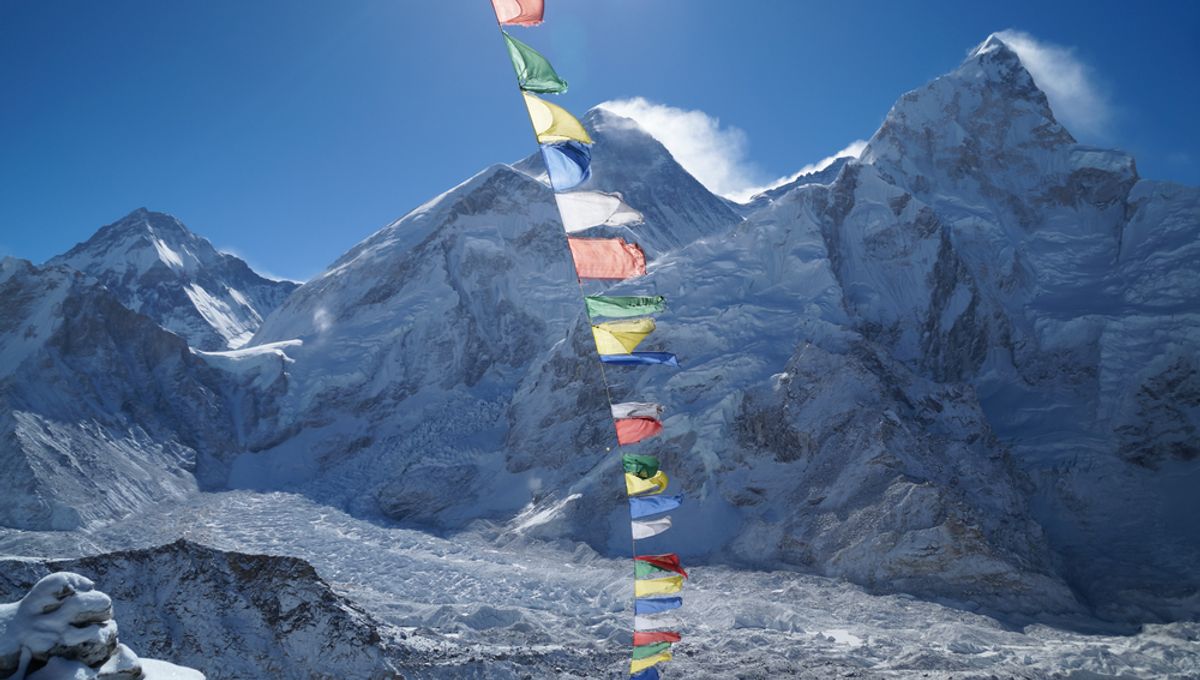
Climbing Mount Everest is incredibly, mind-bogglingly dangerous. It relies on a combination of intense Sherpa knowledge, faith in Mother Nature, and the hope that you don’t get caught in the huge queues to the summit, and that’s before your skill as a climber is even factored in. Every year climbers perish attempting to reach the highest peak on Earth, with this season alone possibly reaching a staggering 17 deaths so far.
The average summit of Everest consists of a trek up to base camp (around eight days at an average pace), which will take you over halfway up to 5,300 meters (17,388 feet). From there, it is another 40 days of climbing and acclimatization to the altitude and low oxygen levels to reach the peak.
The main challenge arrives when climbers reach the “death zone”. Above 8,000 meters (26,247 feet), the air becomes so thin that all but the most extreme climbers require oxygen to go any further; but even then, they still risk severe altitude sickness that disorientates and saps them of energy. Coupled with the risk of avalanches, falls, and frostbite, Everest claims the lives of skilled mountaineers every year.
So, should the worst happen while climbing Everest, what can be done with the body? The air is too thin for helicopters to come and retrieve them, so the only way down comes from Sherpas risking their lives to bring home the dead.
Instead, many bodies have been left in place on the mountain, serving as a stark reminder of the dangers of peaks above 8,000 meters. Some even became markers, where climbers knew they were on the right trail when they passed a particular corpse such as “Green Boots” or “Sleeping Beauty” (they have since been moved off the trail). Most, though, get laid to rest in “Rainbow Valley”.
Rainbow Valley is the moniker given to an area of Everest covered in the bright clothing of people who have died on the mountain and have been pushed into the valley. Adorning the area are rainbow-colored tents and oxygen tanks, and it is said to contain around 200 bodies, though the exact number isn’t known. Acting as a graveyard for those who have to be left in the death zone, the valley lies above 8,000 meters beneath Everest’s northern ridge, making it possible for the bodies to be pushed off into the area below. It has become an almost mythical area for climbers and is highly respected due to the countless people laid to rest there – pictures are seemingly impossible to find, and rightly so.
The dangers of Everest have once again been thrust into the spotlight after the heroic efforts of Gelji Sherpa, who saved the life of Malaysian climber who was dying on the mountain. Strapping them to his back and trekking down 600 meters (1,969 feet) from the death zone to meet another Sherpa, he managed to return the climber to base camp and get them medical attention in what has been called a “very rare operation”.
Rescue missions into the death zone are generally not possible, so the story once again demonstrates the incredible skill of the Sherpas to have made it a success.
Source Link: "Rainbow Valley": The Sacred Graveyard Of Everest Climbers In The Death Zone